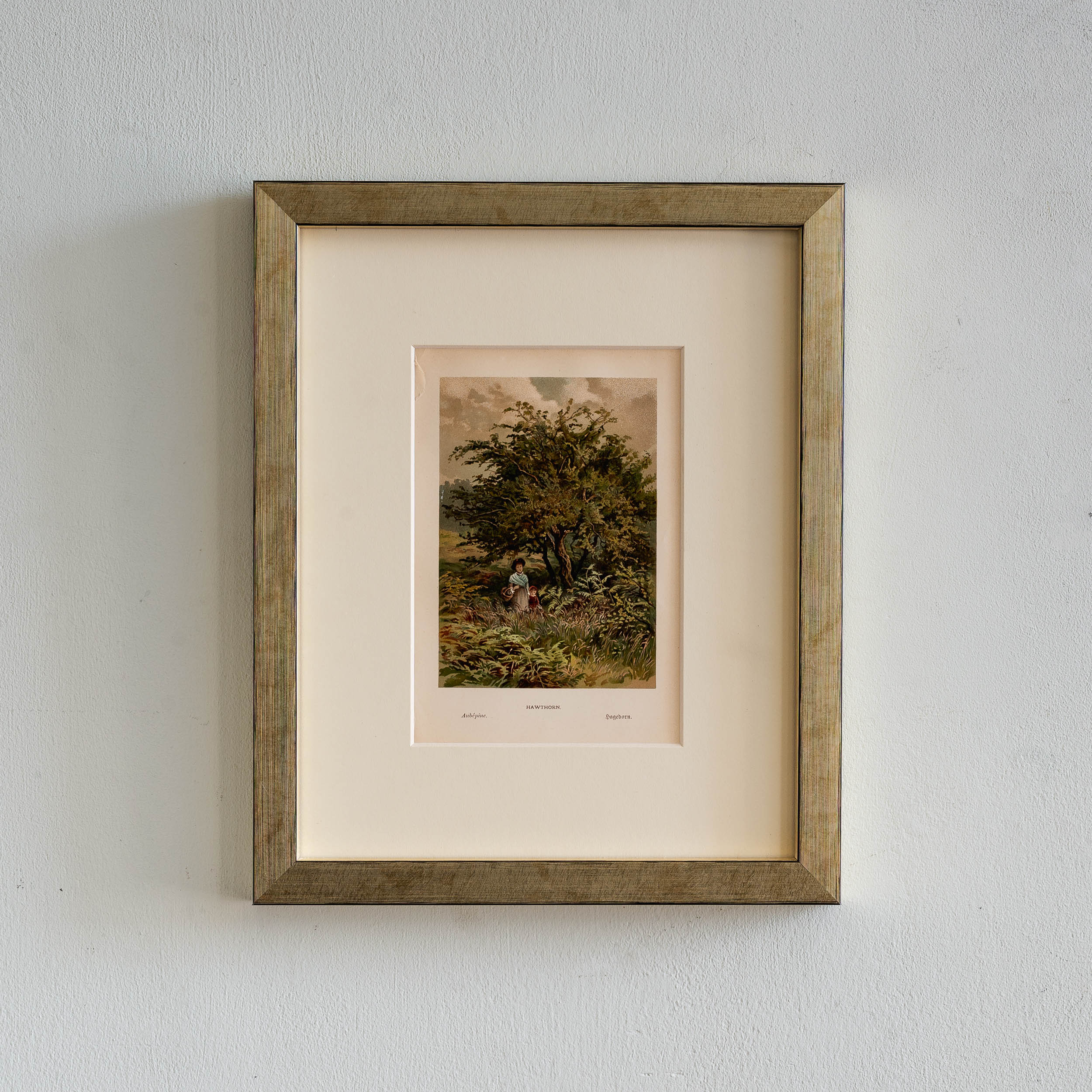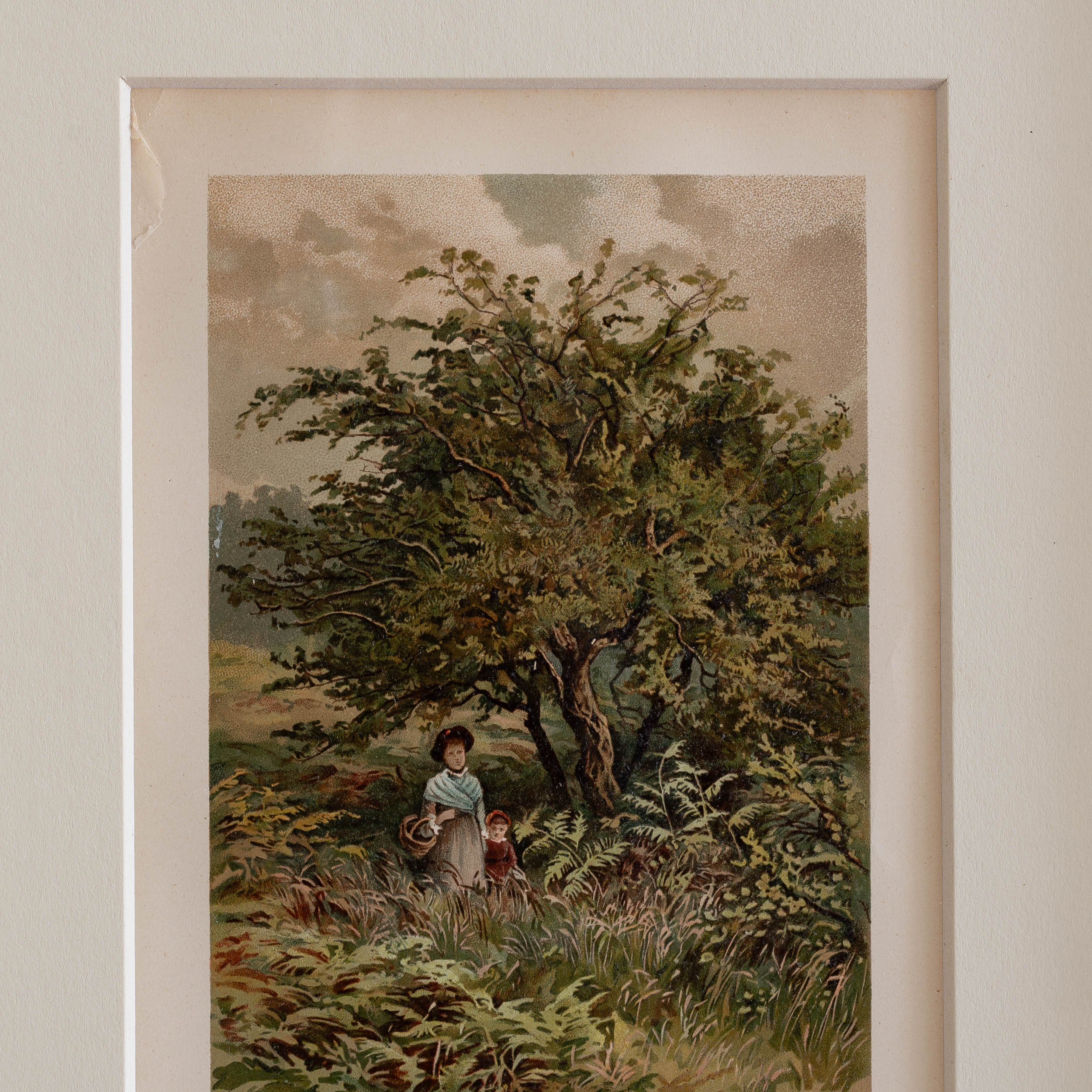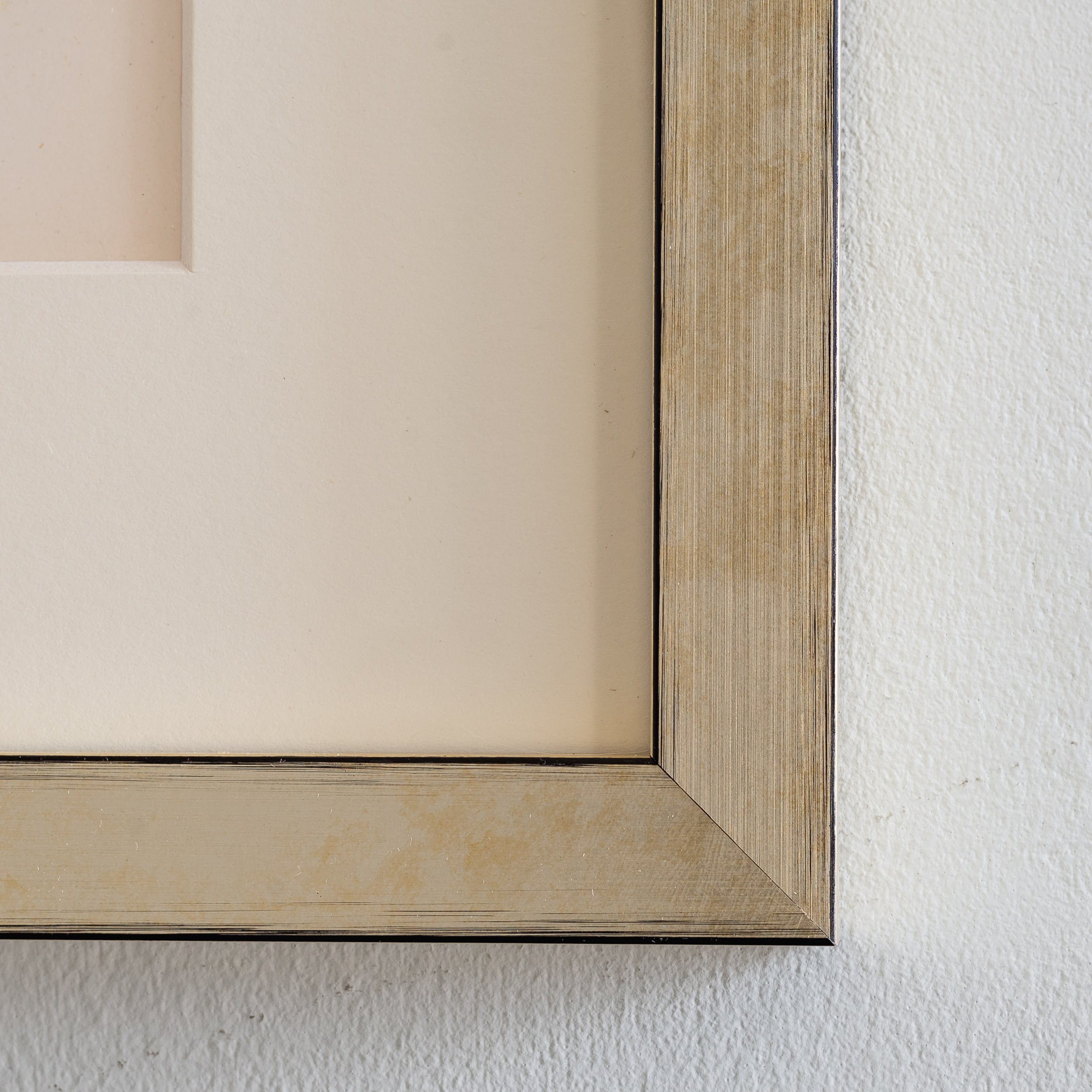Nineteenth century arboreal prints,
European trees published in London c1880. Mounted in cream framed in pale gold.
'Hawthorn'
£140 each
In stock
Chromolithography is based on the principle that oil and water do not mix. The process involves the artist drawing the design directly onto a highly polished lithographic stone using a greasy, acid resistant pigment. When the stone is then placed in a weak acid the uncoloured areas are etched by the acid, leaving the painted areas intact and ready to be used as a printing surface. For multi-colour printing, several stones would be prepared, one for each colour. Gradations of colour were achieved by applying hundreds of tiny dots of each colour on their respective stones, so that when each stone was printed onto the paper the resultant area would be printed with multiple dots of different colours which to the human eye would appear realistic. But if a magnifying glass is used to examine the printed areas, the presence of irregular, multicoloured dots will indicate that the card was printed by the chromolithographic method.
Recently Viewed Items
-
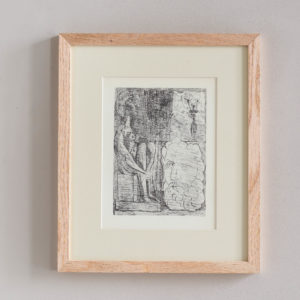
Picasso, Vollard Suite, 1956. Paris, May 5, 1933.
£175 eachPicasso, Vollard Suite, 1956. Paris, May 5, 1933.
Lithographs, published 1956 based on Picasso's work, produced from 1930-1937 for the art dealer Ambroise Vollard. Framed in plain oak with cream mounts. Paris, May 5, 1933. Sculpture of Seated Nude, Sculptured Head, and Vase of Flowers.£175 each -
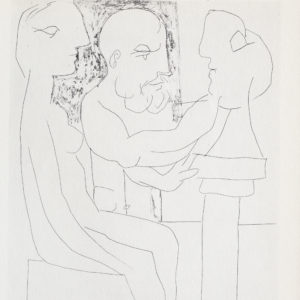
Picasso, Vollard Suite, 1956. Paris, March 25, 1933,
£175 eachPicasso, Vollard Suite, 1956. Paris, March 25, 1933,
Lithographs, published 1956 based on Picasso's work, produced from 1930-1937 for the art dealer Ambroise Vollard. Framed in plain oak with cream mounts. Paris, March 25, 1933. Sculptor Working from a Model.£175 each

